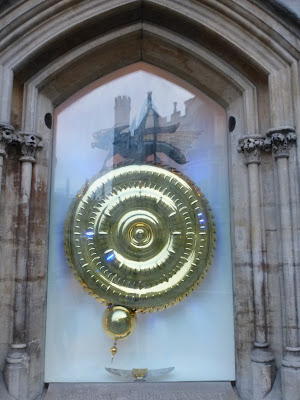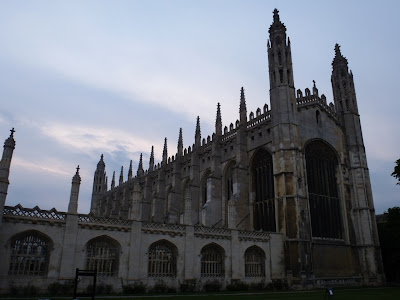We moved on into Kent, a place of great beauty and tiny, twisty roads, and headed for Sevenoaks and Knole House. We visited Knole in 2009, and were impressed, but I didn't post much because of the
no fotos policy. The policy has not changed, unfortunately, but the place is of such interest, its age and contents and history, we went back. Briefly, it was begun in the 15th century as the palace of the archbishops of Canterbury. Henry VIII acquired it in 1538, and then his daughter Elizabeth passed it on to her cousins, the Sackvilles. It has been theirs since 1603, although it has been in the National Trust for some time now. Among the Sackvilles was a royal chamberlain for William III, basically the guy entrusted with disposing of all the furniture, art, etc., that the new king and queen didn't want. Thus Knole has the best collection of all things Tudor and Stuart; which is well worth seeing. The portraits of Elizabeth, her dad, and all their cronies are well worth seeing by themselves. Although only a smidgeon of the house is open, it is thought to have been a "calendar house": 365 rooms, 52 staircases, 12 entrances, etc. It was the childhood home of Vita Sackville-West, and it figures in her writings as well as in Virginia Woolf's.
 |
| Knole House entrance; it's really big |
 |
| Interior courtyard entrance |
 |
Ha! A clandetine shot of the sculpture of Giovanna Bacelli
(her stage name), one of the mistresses of John Sackville,
3rd Duke of Dorset; he had it prominently displayed, his
subsequent wife had it removed to a stairwell; the house is
replete with Knellers, Reynolds, and Gainboroughs, and
others, some quite famous; but, alas, no fotos! |
 |
| One of the Sackville leopards that adorn the place |
 |
| Back outside, a very large English oak |
 |
| White hart |
 |
| Afternoon outing in Britland, on the grounds at Knole |


















































